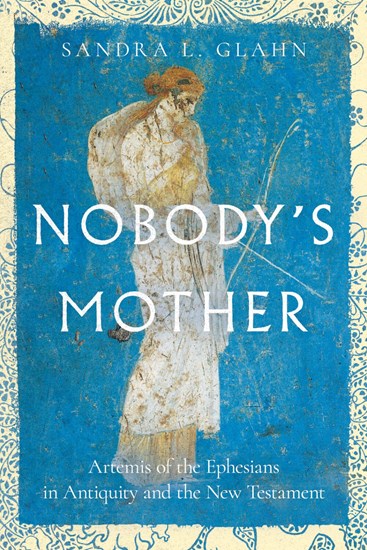
What We Can Learn about Jesus from a Goddess
I love Wonder Woman. But I’m less of a fan of Diana, that is, Artemis, on whom the Wonder Woman character is based. But one thing I do love about Artemis is this: knowledge about her helps me understand parts of the New Testament (NT). The NT writers, while seeing Greek gods as false, certainly didn’t shy away from referencing them. The author of Acts, presumably Luke, mentions a ship with the Dioscuri (the sons of Zeus, namely the twin brothers Castor and Pollux) for its figurehead (Acts 28:11). And he recounts how the people in Lystra thought Paul was Hermes, “because he was the chief speaker” (Acts 14:12)—Hermes being the herald of the gods. Luke also mentions the Ephesian manifestation of Artemis. In fact, he does so multiple times (see Acts 19). In doing so he writes about how the city clerk in Ephesus spoke of the diopet or “Zeus-fallen” image (Acts 19:35), often translated as the “image that fell from heaven” and that was related to the Artemis worship in their city. According to Homer, Zeus was Artemis’s father. He was married to Hera, but had a sexual liaison with Leto—who consequently conceived and gave birth to twins Artemis and Apollo. The natal site is near Ephesus.
Artemis as the firstborn was said to have given her mother a painless birth. But then Artemis witnessed Leto writhing in travail for nine days delivering Artemis’s twin, Apollo. This establishes Artemis as both firstborn and a midwife with the ability to deliver painlessly. That’s her backstory.
Fast forward to the time of the earliest Christians. A story about Artemis in Ephesus recorded in Acts 19 includes how a disturbance arose in the city because its silver workers felt the apostle Paul’s gospel ministry was cutting into sales of Artemis souvenirs. Her temple was the jewel in the crown that was the Seven Wonders of the Ancient World, so the drop in sales due to Paul’s teaching risked shaming their goddess. Consequently, the people rushed into the theater (which held 25,000 people and is still standing), and for two hours chanted “Great is Artemis of the Ephesians!” Paul had already planned to leave Ephesus for Macedonia, but this disturbance moved up his timeline. Later, he wrote a personal letter back to his protégé in the city, Timothy, telling him “As I urged you when I went into Macedonia, stay there in Ephesus so that you may command certain people not to teach false doctrines any longer” (1 Tim 1:3).
We know from Acts 19 that magic and Artemis were strong spiritual forces in Ephesus. From inscriptions we connect the two rather than seeing them as separate spiritual forces. So, what did Artemis followers believe?
Rather than being a mothering fertility goddess, as many have supposed, Artemis was a virgin in the strictest sense and thought to have the power to deliver women safely through childbirth—or kill mother, child, or both painlessly. Childbirth was the number-one killer of women in the ancient world, so Artemis was quite popular. In one manifestation of the goddess in the statuary and coins, she carried a bow, arrow, and quiver—much as Wonder Woman appears today. But in other statues that existed simultaneously she is covered with bulbous appendages that scholars believe to be Hittite magic sacks. As I like to explain it, Barbie can be both the president and an architect. And Artemis could exist both as the lovely archer and in a the bizarre-looking, bee-like form.
The writings and inscriptions dating to the time of the earliest Christians in Ephesus tell us people believed she could save or deliver people, but also that her arrows could euthanize painlessly. Her cult consisted of both male and female devotees, so she was not for “women only” any more than devotees of the Virgin Mary are “women only.” (I’m not suggesting the two are parallel; only that there are some analogies.) We know from inscriptions that many of the cult positions related to Artemis-worship were filled by females, especially females unattached to men, who had wealth and position. One office existed solely for providing the goddess with apparel!
As Homer told it, Artemis asked Zeus to give her many titles. And in her creation story she was first. Inscriptions dating approximately to the time of Paul address or describe her as savior, lord, god, first Throne, manifest, and many more.
It’s interesting to note, then, that when Paul writes his personal missive to Timothy (not to the whole church in Ephesus, by the way), he begins not with his usual “grace and peace to you…” but “Paul, an apostle of Christ Jesus by the command of God our Savior and of Christ Jesus our hope…” Some scholars think the author can’t possibly be the apostle Paul because he usually does not use the word “Savior.” But what if he was borrowing from the “Artemis vocabulary” in the same way someone might say “kryptonite” if they wanted people to think of a certain superhero? Later in the letter, Paul expresses concern for women’s financial modesty as it relates to gold, pearls, and expensive apparel (1 Tim 2:9). Were the women in the church influenced by the their city’s religious emphasis on apparel and wealth?
Speaking of women, or perhaps specifically wives, Paul wants Timothy to “let them learn” (1 Tim. 2:11) but their demeanor (apparently not “in quietness” or “full submission”) needed to change. And they were to stop teaching men (or perhaps husbands). Paul follows up giving his rationale for this limitation—Adam was first, and the woman being deceived was in transgression.
Could Paul have been correcting a wrong creation story (Artemis first and preeminent) with the true one—the Genesis story (woman second and not even free of guilt)? Were women in Timothy’s congregation going house to house (1 Tim. 5:13) teaching “nonsense”—a word Paul uses here that Luke used elsewhere in connection with the magic? If so, Paul’s limitation would put men and women (or husbands and wives) on a more equal plane in the context where the local goddess was perceived as a preeminent female.
The consolation Paul adds for the women in Timothy’s care is this: “But she will be saved through childbearing”—followed by a qualification: “if they continue in faith and love and holiness, with self-control. This is a faithful saying.” Could “she will be saved through childbearing” be an “Artemis saying”? Is Paul taking a local saying that related to Artemis’s midwifery and giving it his own Christian spin, turning it into a “faithful” saying? He had a habit of doing so.
In the same section of Acts where we read about Ephesian magic workers and the disturbance related to Artemis silver workers, we read that Paul had worked extraordinary miracles and wonders that demonstrated God’s power in Ephesus (Acts 19:11-12). It only makes sense that the goddess of midwifery would be shown up by the true God’s ability to delivery women safely through childbirth. Not for all time. Not everywhere. Not in every context. But as a sign that their local god was a worthless piece of rock made by human hands.
Is Paul replacing the number-one perceived benefit of Artemis (delivery through childbearing), which addressed the number-one fear of Gentile women (dying in childbirth/writhing for days), with the suggestion that Jesus is stronger and better? It would certainly be consistent with his approach and his priorities.
Our first cues for seeing the text this way come not from Homer but from the Book of Acts, which points readers to a spiritual context in Ephesus of magic linked to Artemis worship (and the inscription and statuary records bear this out). The silver workers’ spokesperson acknowledges the Gentiles are changing their behavior as a result of Paul’s teaching about gods and idols (Acts 19:26). What would be the effects on the synagogue-planted church if women from the Artemis cult became followers of Jesus, the Messiah? Can you imagine?
But even Wonder Woman has never been a mother goddess, a fertility goddess, connected with prostitution, or a man hater. What is true of her, though, is that an understanding of the goddess who inspired her just might help us better understand some parts of the NT. And such an understanding points us to this reality: Jesus is better.
Adapted from a column I wrote for Kelley Mathews’s blog, The Estuary, on Patheos. For years, I’ve been writing about my research into Artemis in Ephesus in this space (links below). Today my decades-long project is launched in a book with IVP-Academic called Nobody’s Mother: Artemis of the Ephesians in Antiquity and the New Testament. Thanks for accompanying me on the journey, asking great questions, and seeking good clarifications. You made it a better project.
Paul, Artemis, Ephesus, and 1 Timothy
Who Was Artemis and Why Does It Matter?
Who Was Artemis and Why Does It Matter? Part II




